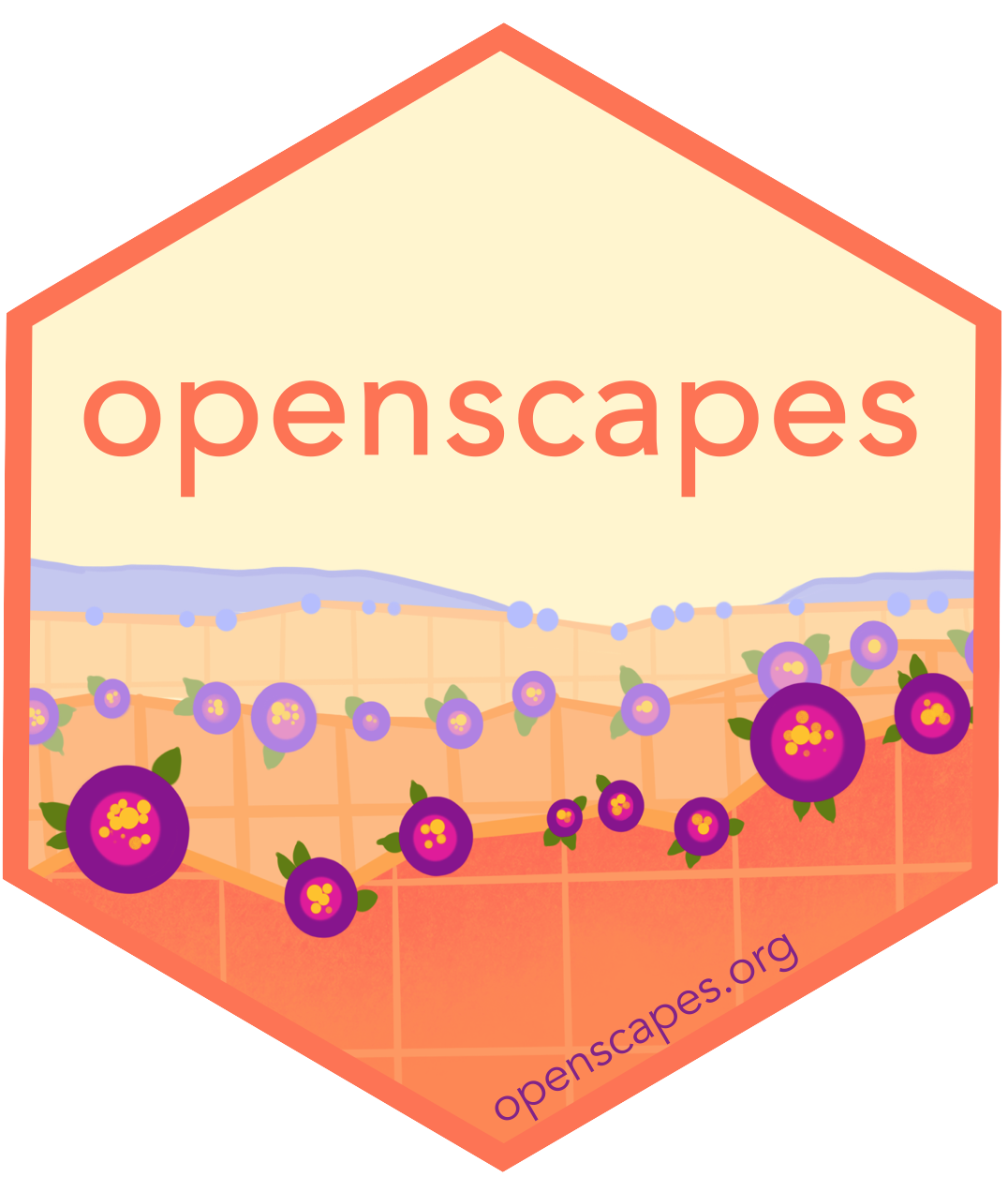Transition from RMarkdown
You may already have workflows in RMarkdown and are interested in transitioning to Quarto. There’s no hurry to migrate to Quarto. Keep using Rmarkdown and when you’re ready the migration will be fine.
Here are some notes as we migrate RMarkdown sites and books.
TODO: translating R code chunks
Bookdown to Quarto
Converting a Bookdown book to Quarto is slightly more involved than converting a website. A book has chapters whose order must be defined, and likely has citations and cross-refs. Still, conversion is not that hard.
We got some practice converting from Bookdown to Quarto by helping Gavin Fay convert his lab’s fantastic onboarding documentation, the Faylab Lab Manual. Here’s the GitHub view before and after.
Our best first reference material for this was Nick Tierney’s Notes on Changing from Rmarkdown/Bookdown to Quarto. Nick shares some scripts in that post to automate some changes. In our case, the book was small enough that we made all changes manually. Quarto documentation was indispensable.
Experimenting in a low-risk environment
We forked a copy of the Faylab Lab manual to the Openscapes organization, and worked in a branch so we could make changes relatively risk-free. We could always fork a new copy of the original if we “broke” something. (Caution: the default when making a pull request from a fork is to push changes to the original upstream repo, not your fork and it does this without warning if you have write-access to that repo.) With local previews it’s easy to test / play with settings to see what they do. We tended to make a change, Preview, then compare the look and functionality of the book to the original. It was helpful to comment out some elements of the configuration file _output.yml after their counterparts had been added to the Quarto configuration file _quarto.yml, or to confirm they were no longer needed, before making the drastic move of deleting them.
The conversion
Here are the main steps to convert the Faylab Lab manual from Bookdown to Quarto.
Create new empty file called _quarto.yml and add book metadata there. The screenshots below
Set project type as book.
Move metadata out of index.qmd and into _quarto.yml. Title, author, and publication date were in index.qmd with date set using date: "Last updated:r Sys.Date()". Now these are in _quarto.yml with date set using date: last-modified. Note that having R code would require you to adjust code chunk options in the Quarto style (#|). This tripped us up a bit; see GitHub Actions.
Move chapters listing out of _bookdown.yml and into _quarto.yml.
Add page footer to _quarto.yml.
Here’s what ours looked like when we finished the steps above (_quarto.yml).
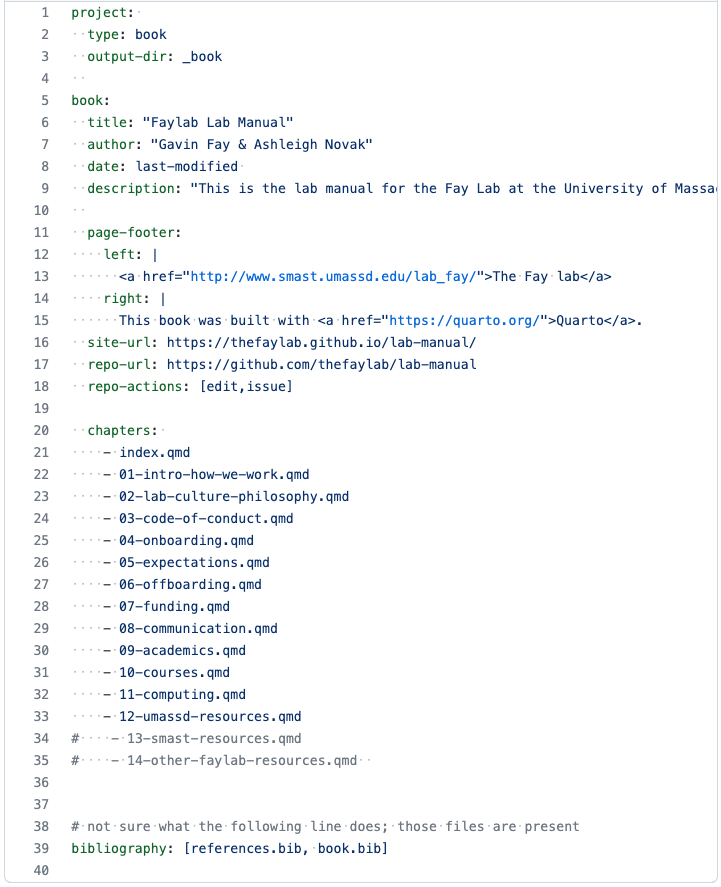
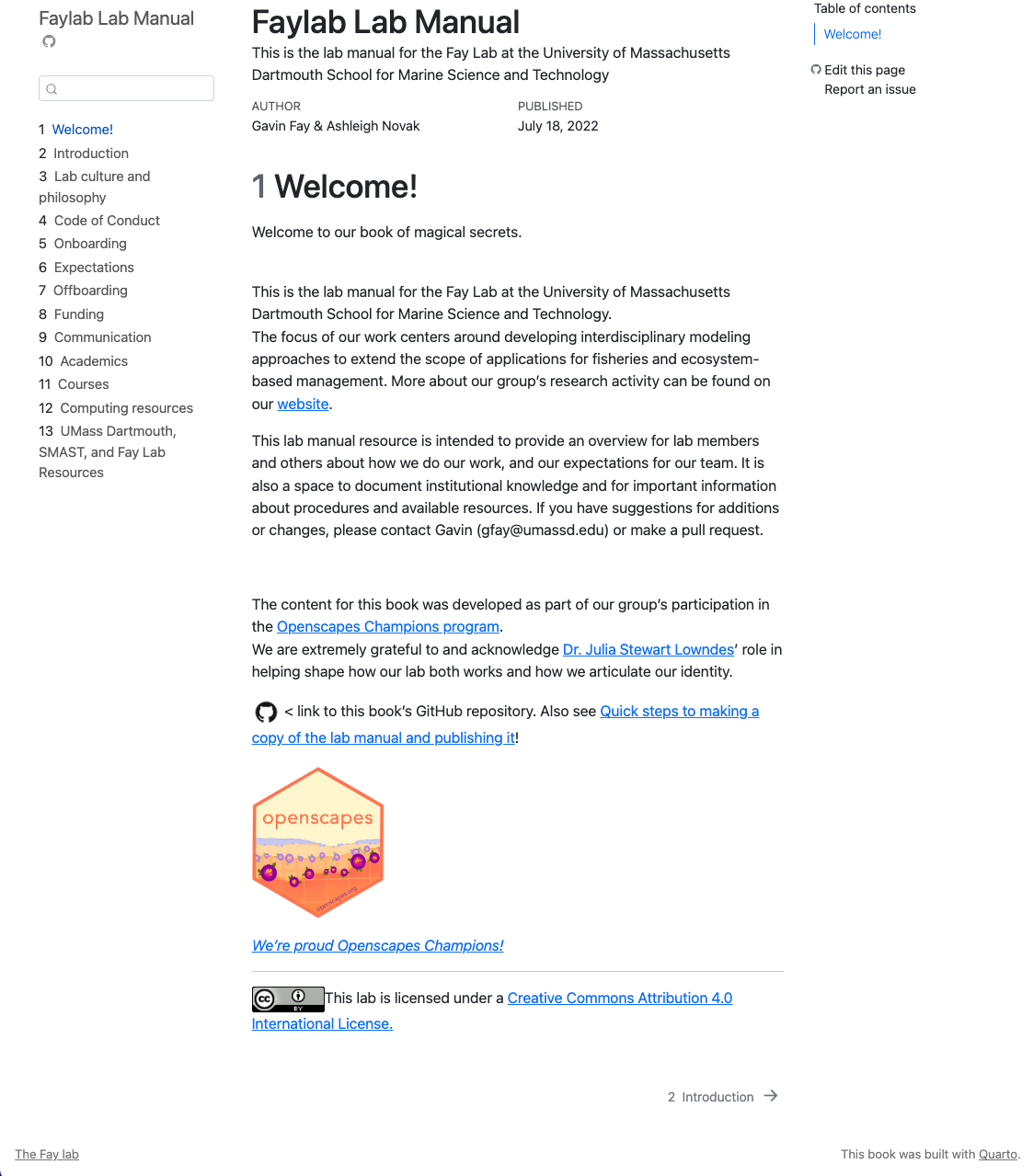
Change insertion of images from html style to Quarto style. (Note Quarto calls them “figures”, not “images”.) The following snippet will insert the GitHub octocat logo in a page:
{fig-align="left" width="35px"}Change all filename extensions .Rmd -> .qmd (you could Preview after this change and see that the book looks the same). Note that Quarto works with .Rmd files just as well as it does .qmd, so this change is not urgent. In fact, if you have a lot of R code in your .Rmds (unlike the Faylab Lab Manual), there will be additional tinkering needed to make the code chunks happy.
Citations
The Faylab Lab Manual cited two papers, presenting us with an opportunity to see how easy it is to add references to a Quarto book. Briefly, in the Visual Editor, Insert > Citation > DOI. Pasting the DOI or its full URL, we can insert the citation. This automatically creates a references.bib file and adds the full citations at the bottom of the chapter page (watch demo). In July 2022, we had to manually add a ## References heading, but this may not be necessary in future Quarto updates.
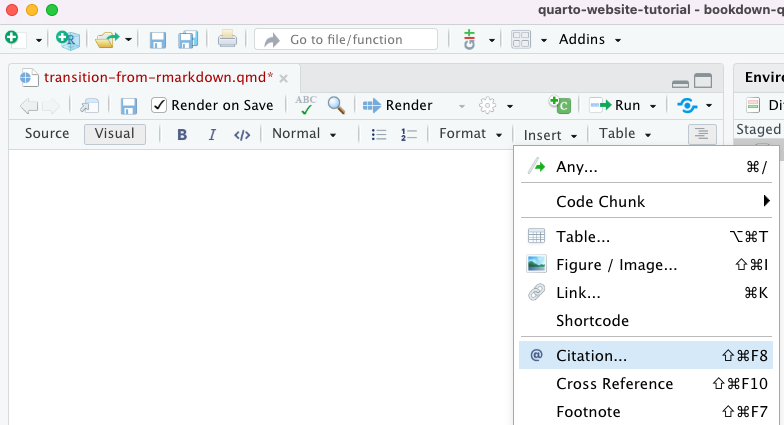
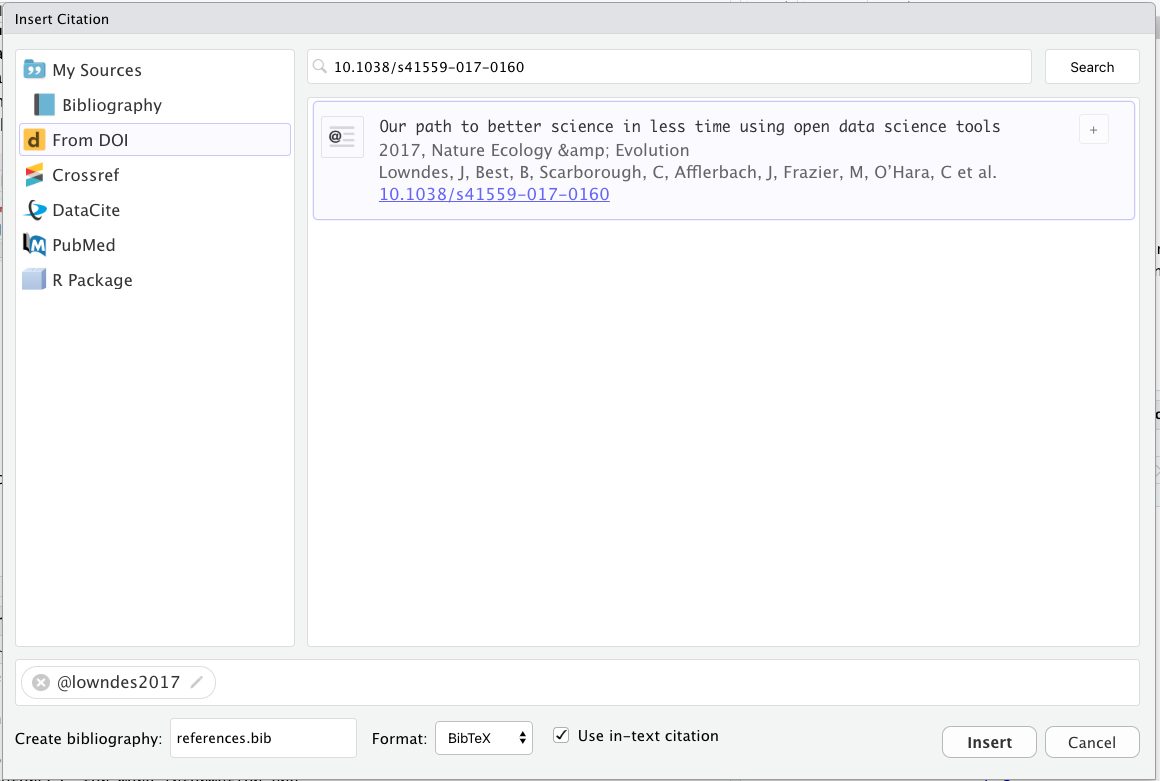
Publishing notes
If the book’s output is strictly html, there’s no need to specify output-dir in _quarto.yml. The output directory default is _book/, which is what we’d like. If we wanted other types of output like like PDF or EPUB, etc. those single file outputs are also written to the output-dir (Quarto docs).
If you currently have a docs/ folder, delete it.
Update .gitignore to ignore _book/. At the same time, we have it ignore caches and a .quarto file:
/.quarto/
*_cache/
_book/Once all is settled, delete _output.yml.
Once the Openscapes fork was fully reviewed, we made a pull request from that to the main branch of the book’s repo. Once that was merged, we set up GitHub Actions to render the book. (TODO: instructions for GitHub Actions)
GitHub Actions
This book was mostly prose and screenshots without any R code. This made the conversion from RMarkdown to Quarto likely more straightforward than if you also needed to adjust code chunk options in the quarto style (#|). Our initial GitHub Action to render the converted Faylab Lab Manual failed because we had a piece of R code - even though the code was commented out! This was resolved when we deleted the line.
Distill to quarto
We transitioned our events site from distill to quarto in May 2022 (github view before and after). We followed excellent notes and examples from Nick Tierney and Danielle Navarro.
After we had changed all the files, the Build tab in the RStudio IDE still showed “Build website” rather then “Render Website” and “Preview Website”, and would error when we pushed them (because that button was expecting a distill site, not a quarto site). To fix this, we updated the .Rproj file. Clicking on the .Rproj file in the RStudio IDE will open a dialog box where you can click things you want (you can also open these in a text editor or from the GitHub website to see the actual text). To fix this situation with the Build tab: Project Options > Build Tools > Project Build Tools > None.
Looking at files /posts/_metadata.yml and _quarto.yml helps see where things are defined. For example, to make event post citations appear, we added citation: true to /posts/_metadata.yml and in _quarto.yml under the website key we set site-url: https://openscapes.github.io/events. We deleted footer.html used with distill because footer is now defined in quarto.yml.
Publishing notes
Background: Our distill site had been set up to output to a
docsfolder, and had GitHub Settings > Pages set to look there rathergh-pagesbranch. (Julie note: this was a new-to-me capability when we set up the events distill site in Spring 2021 so I had forgotten that was an option). We’ve inititally kept this same set-up for now with our events page in_quarto.yml:output-dir: docs. However, this is sub-optimal; better to not have to commit and push these files but to instead have a GitHub Action generate them upon a commit. So the following is what we did -
Don’t specify output-dir in _quarto.yml. The output directory default is _site/, which is what we’d like.
If you currently have a docs/ folder (like we did as we were experimenting), delete it.
Update .gitignore to ignore _site/. At the same time, we have it ignore caches and a .quarto file:
/.quarto/
*_cache/
_site/Push these changes, merge into main.
On GitHub.com, in your repo, set up GitHub publishing
Follow instructions from the explore and setup chapter.
Troubleshooting
GitHub Action fails, says you need RMarkdown but you don’t have R code!
And you changed all .Rmds to .qmds!
You likely have a few setup code chunks from RMarkdown, that look like this:
{r setup, include=FALSE}
knitr::opts_chunk$set(echo = FALSE)
You can find them by opening each of your files and having a look, or use GitHub’s search for the keyword knitr
